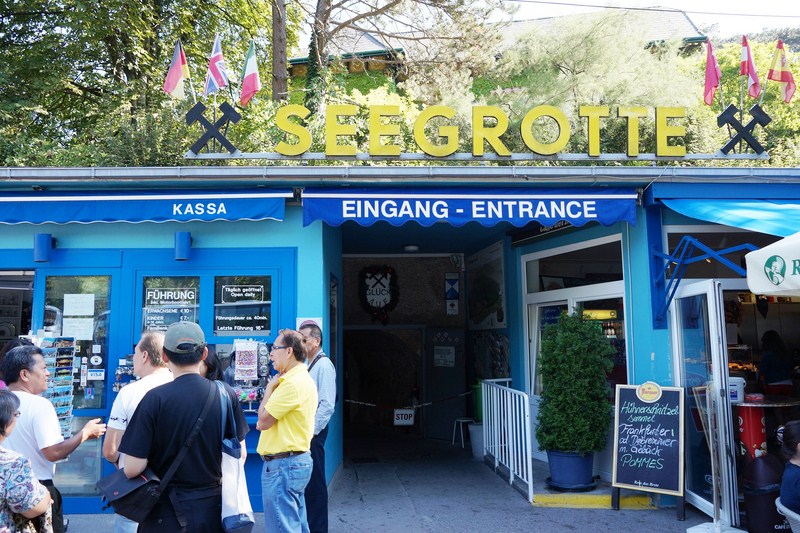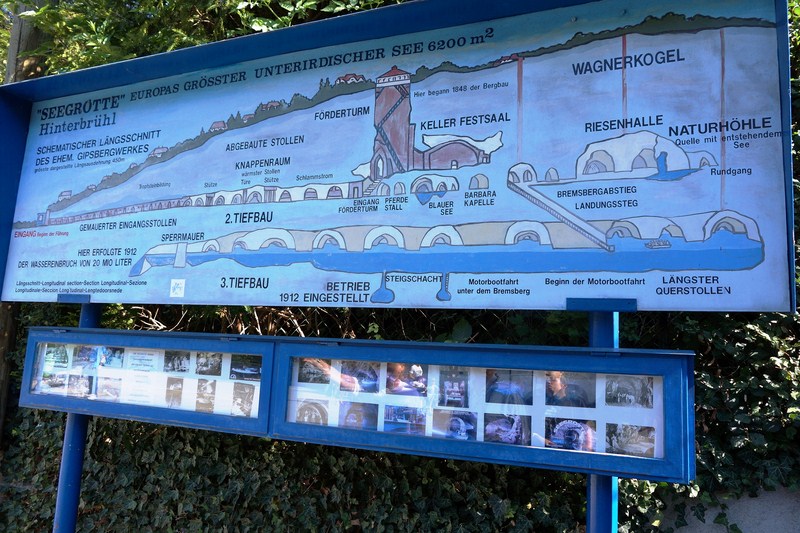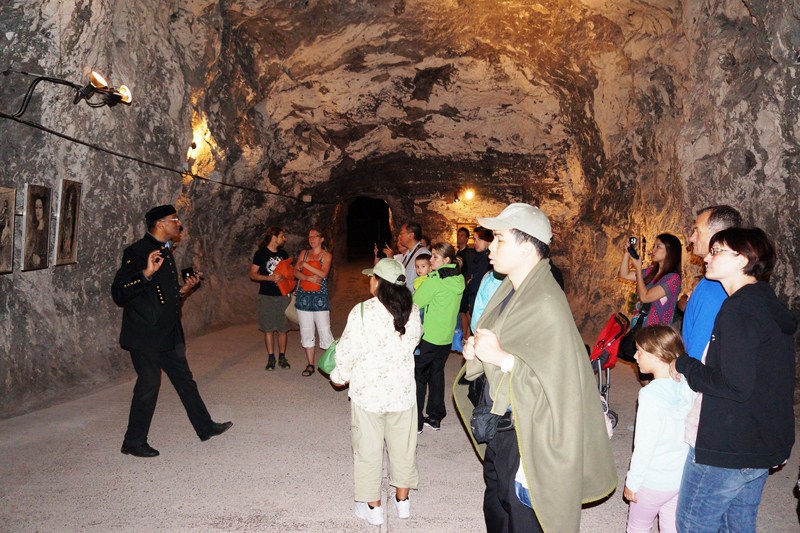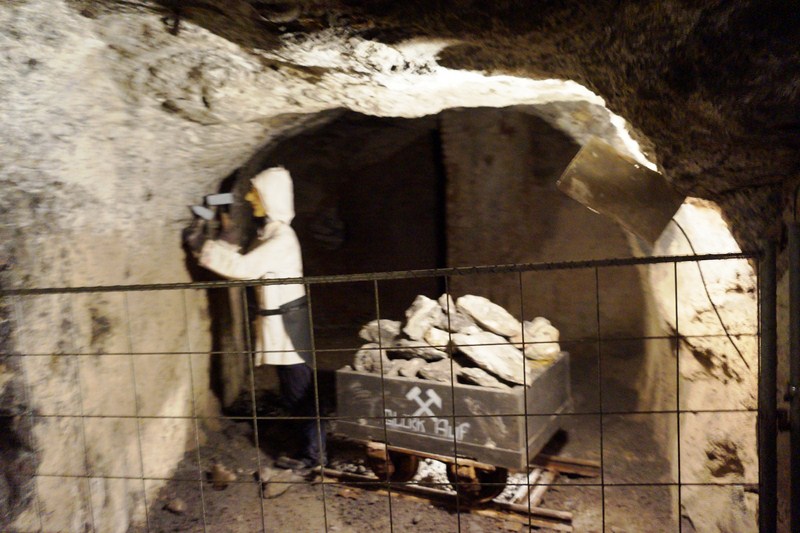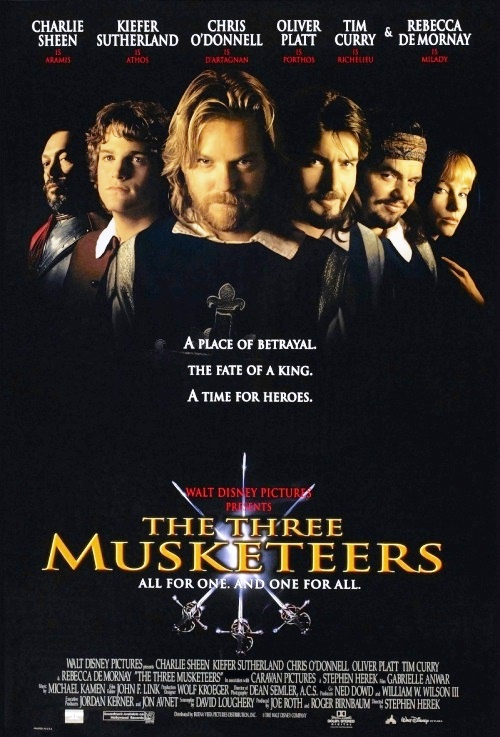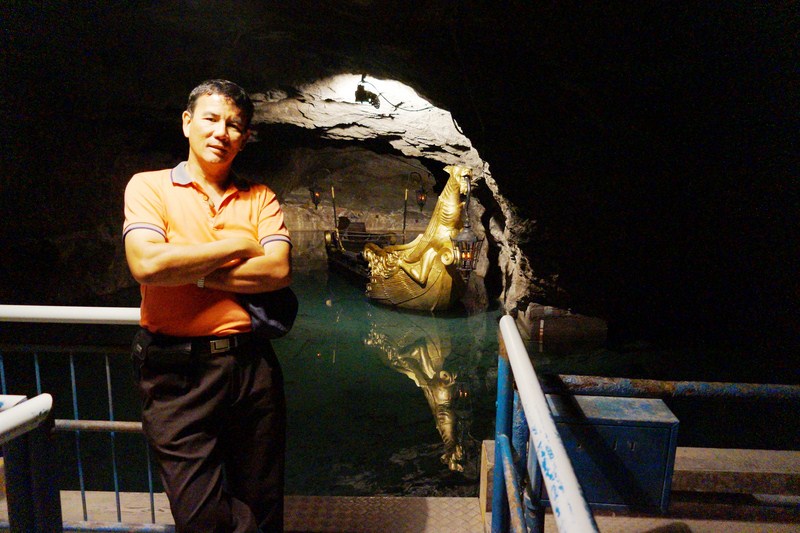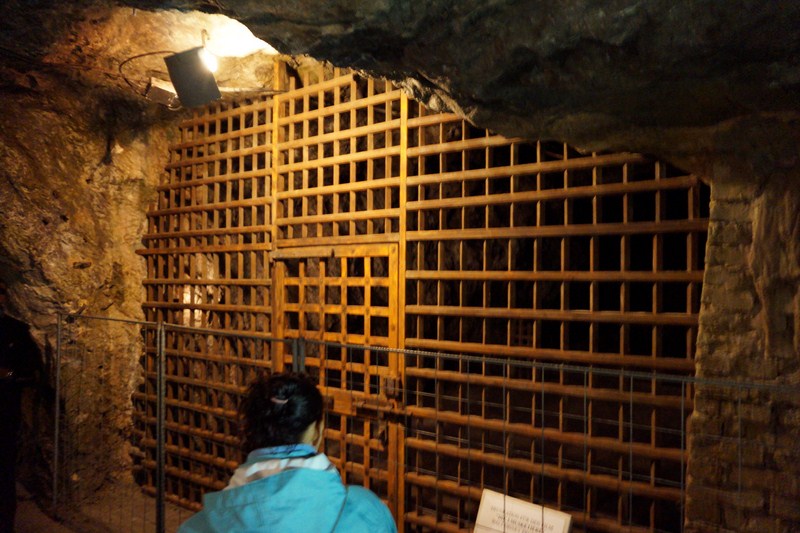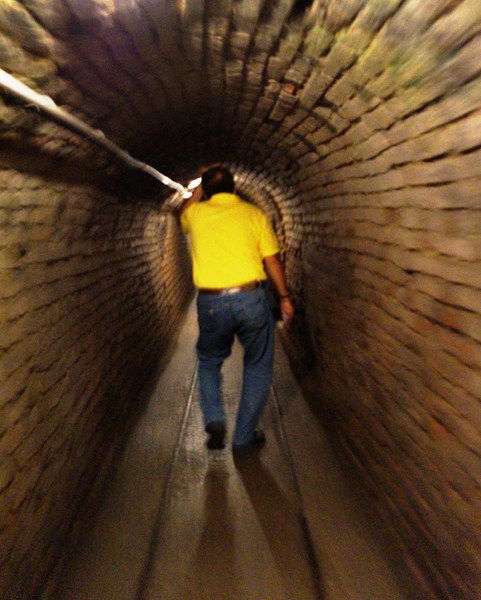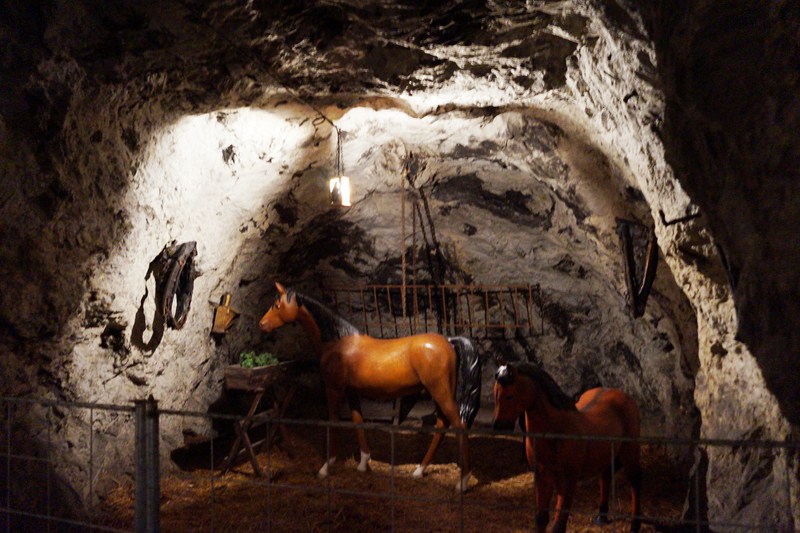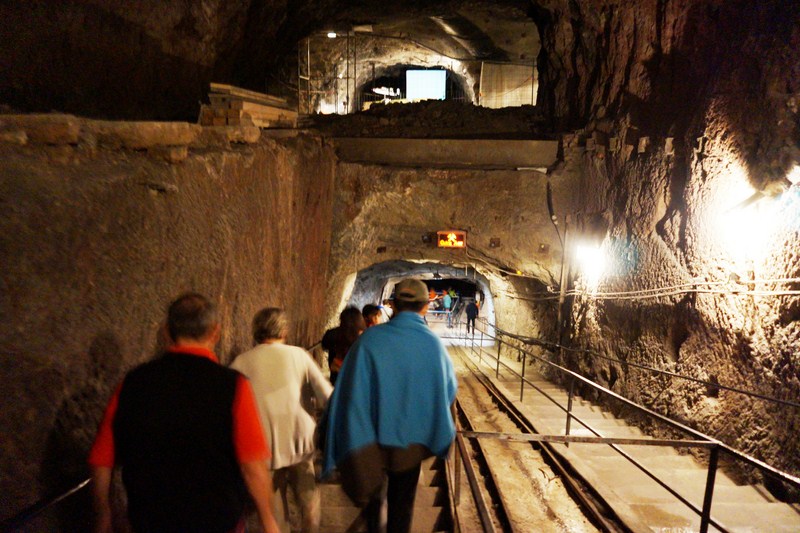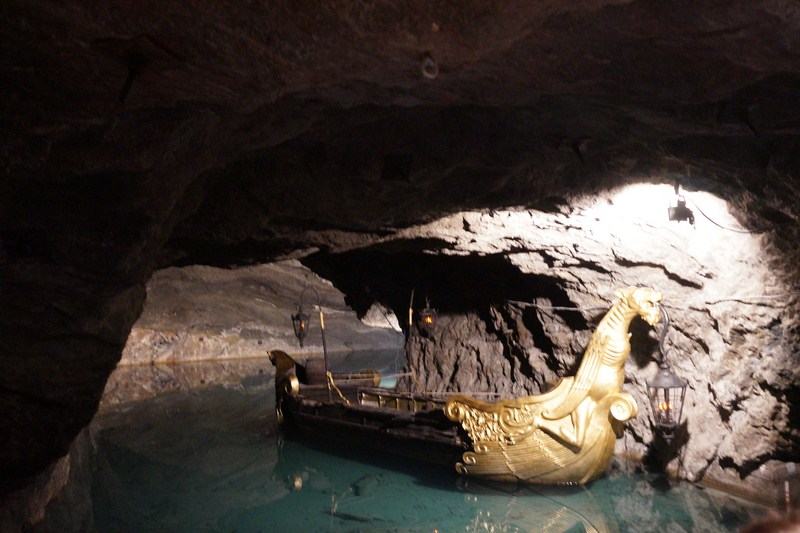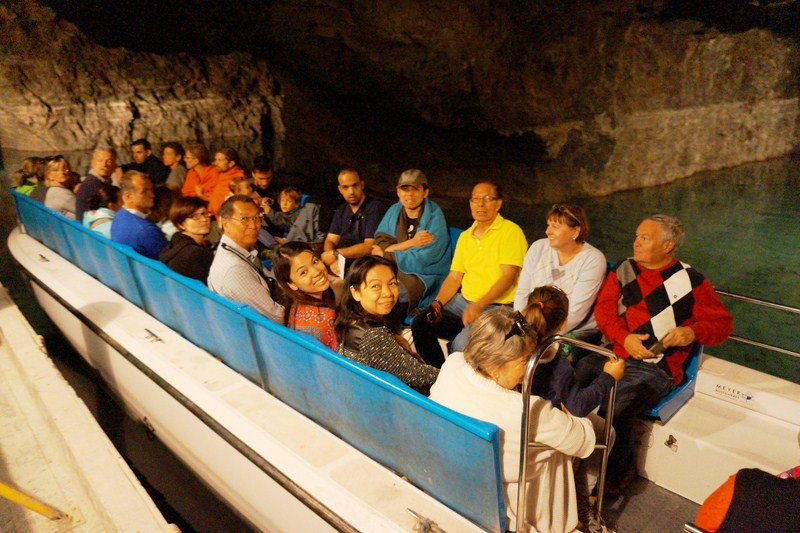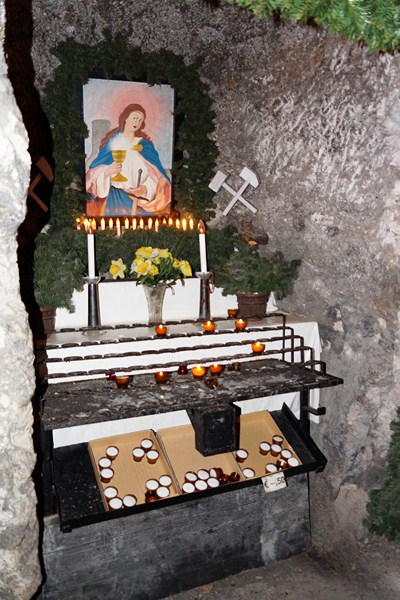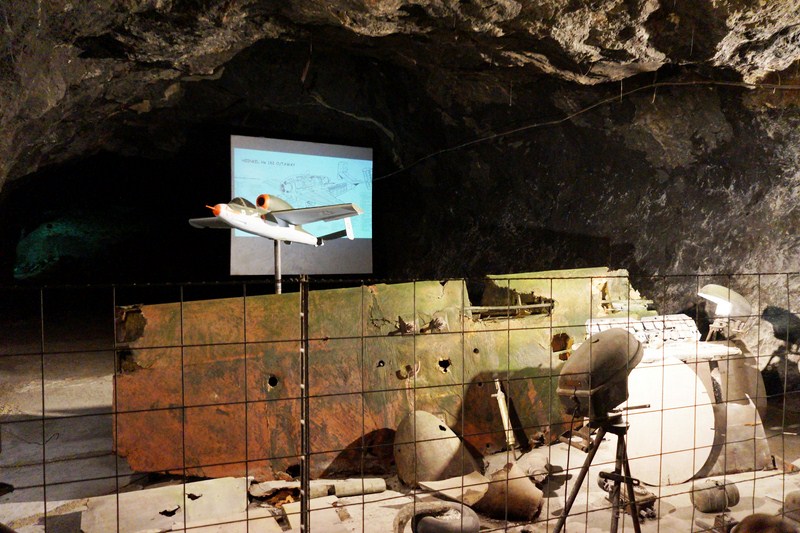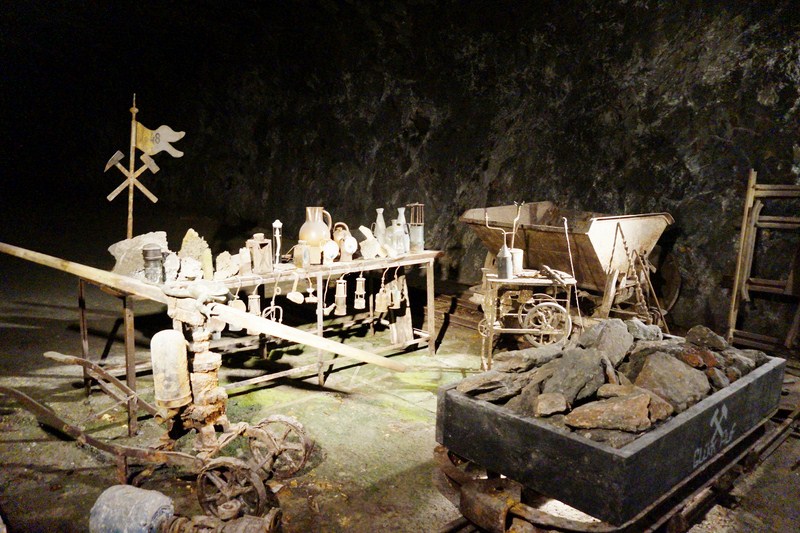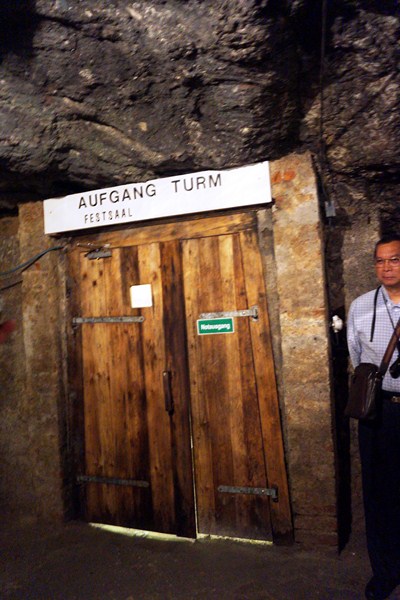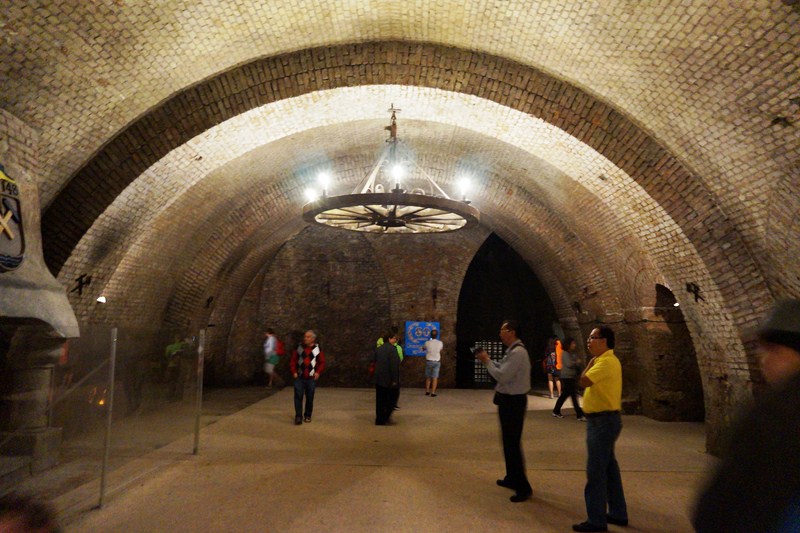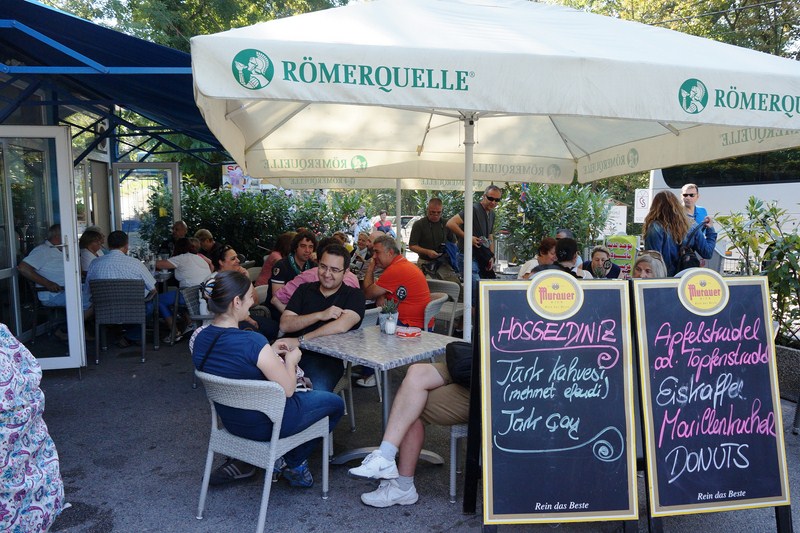We were now on our final day of our Europe Tour and, prior to our evening departure from Vienna for Manila, Grace’s cousins Popong and Freddie organized one final morning tour, this time to Seegrotte, one of the most spectacular natural monuments in the world today. After breakfast at the hotel, we again met up with Popong and Freddie at the hotel lobby and again boarded the same hired van we used for touring yesterday.
Seegrotte, in southern Lower Austria, near Hinterbrühl, is a 26 km. (40-min.) drive, via the A23, from Vienna. It is an underground cave system with a large grotto located under a former gypsum mine. From 1848 to 1912, red and grey gypsum, used by farmers as fertilizer, was mined in the mountain inside the Wagner Kogels by G. Plankenbichler. However, in 1912, an underground blasting operation in the mine went awry, opening a water pocket and causing 20 million liters of water to gush forth from behind the rock and flood the lower level galleries and adits of the mine, creating the largest subterranean (60 m. below ground) lake in Europe but causing the mine’s closure.
As a consequence, the mine remained closed for years until the 1930s when an international team of cave explorers rediscovered the unique natural spectacle and, with great enthusiasm, they opened this curiosity to the general public as a show mine in 1932.
However, during World War II, Seegrotte was requisitioned by the German military due to the fact that the subterranean site offered the best protection against bombing raids in Nazi Germany‘s “second Ruhr.” It was permanently pumped dry and inside the far flung tunnels, Heinkel Werke built an underground aircraft factory and employed over 2,000 World War II prisoners-of-war and concentration camp prisoners (1,800 forced laborers and 300 skilled workers) to produce the air frames (a total of 198 were produced) of the Heinkel He 162 Salamander, one of the first jet fighters of the world and a secret weapon of the German Luftwaffe. At the end of the war, the German armed forces destroyed the pumps that prevented the mine from filling with water.
After the war, a major clean-up was undertaken and Seegrotte was reopened, in the spring of 1949, as a tourist attraction of the first order. Since its reopening more than 10 million visitors from around the world have visited this former mine, 250 000 of them just last year alone. The complex also served as a location for some of the scenes from the 1993 Disney movie “The Three Musketeers,” and some of the set dressing is still in place (prison walls, and a boat in the underground lake).
Upon arrival and payment of admission at Seegrotte, we waited outside the entrance for the previous tour group to finish and return before entering. Above the gateway is a sign with the words “Gluck auf,” the old German miner’s greeting literally translated as “Luck up” or “Luck open.” We were forewarned that it is very cold inside (a constant 9° C, the temperature in summer and winter alike) and, as we didn’t bring a shawl, stole or jacket, we rented a blanket for €0.50. The 35-min. tour took us to 5 lighted caves depicting various activities within the mine as well as the underground lake.
The narrow tunneling adit we passed through (anyone over 6′ would have to stoop), single file, was about 400 to 450 m. long and took us 15 mins. to traverse, a compelling recognition of the dismal workday environment of the miners as, in the past, 80 miners brought 2-3 wagons of gypsum daily to the surface through this adit.
Down the hole, we first stopped at a pause chamber, with miners represented at work, and then the former gypsum mine’s own horse stable. The horses, which pulled the heavy wagons loaded with gypsum to the surface as well as turned the horse mill, stayed up to 20 years inside the mine without going up, going blind in the process.
Next stop, down an easily negotiated (there’s no wheelchair access though) 85-step stairway, is the very picturesque Blue Lake whose water surface area is about 300 sq. m. A part of the bigger lake is located 14 m. below this small lake. It is about 1.2-3 m. deep and its water temperature is about 8° C. The eerily lovely lake’s still, lifeless (without oxygen, there is no aquatic life at all) but very clear waters glow deep blue under artificial lights. Nearby is the spooky gilded boat and the set for D’Artagnan‘s prison.
The lake is fed by 7 underground springs but has no natural drainage. The water depth is maintained constant at around 1.2 m. by pumping out 50-60 thousand liters of water daily every night.
Here, we were to make a short (10-min.) and nondescript, electric motor-powered boat ride. Manny, Popong, Grace, Cheska and Kyle boarded ahead of me and Freddie and we had to wait for their return before boarding. The boat ride took us through cave openings that look so beautiful, especially when reflected on the crystal clear water.
After our boat ride, we again went up the stairs and proceeded to the Chapel of St. Barbara, built 25 m, below the surface by the miners in 1864 for their dead and injured comrades and consecrated to their patron, St. Barbara. Again, the two letters G + A stand for the miner greeting “Gluck auf” (“Good luck”). Every four years, the St. Barbara Celebration takes place at the Chapel of St. Barbara on the first Sunday in December. On that day, a senior chaplain celebrates Mass in honor of the miners. At one time, the Cardinal of Vienna attended, accompanied by the Vienna Boys Choir.
Final stops are a display of a scaled model and few original airplane parts of the Heinkel He 162 and a museum exhibiting mine lamps and former mining tools (miner’s lamps, etc.) which were used in the past gypsum mine. This was supposed to be the end of the tour, but we still had time to explore, on our own and up a flight of stairs, to the Festsaal, the ballroom of the Berwerkes where feasts were celebrated.
If you have half a day to spare, Seegrotte is an interesting place to visit if you are around Vienna. It is not typical cave, so if you are looking for rock formation or typical dripstones such as stalactites and stalagmites, you will be disappointed. It is simply a huge underground space with an interesting history and an underground lake as its main attraction.
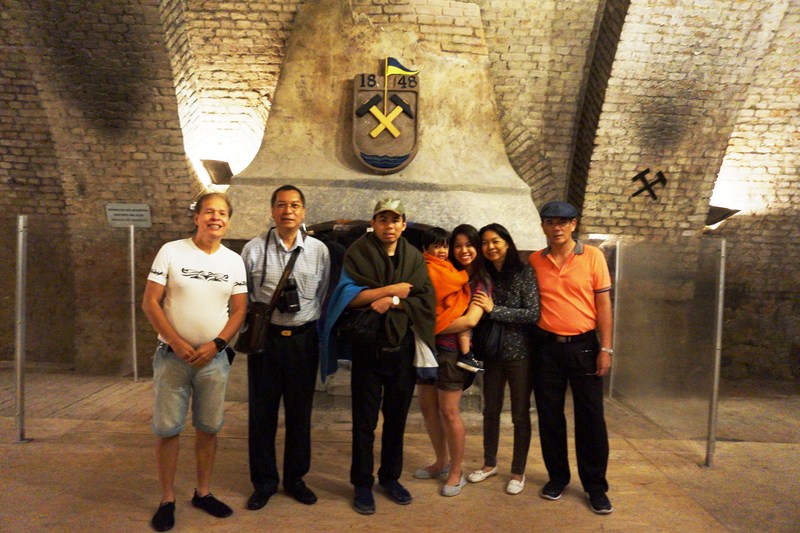
L-R: Freddie, Manny, Jandy, Kyle, Cheska, Grace and the author. In the background is the fireplace of the Festsaal
During our visit, it was the perfect getaway from the heat of the Viennese summer. The tour is not recommended for people who have difficulty walking or are claustrophobic. Wear sensible footwear as the mine floor can be slippery. Beside the entrance is the nice Romerquelle cafe offering cakes, doughnuts and apple strudel. The toilets/WC are PAY only and situated about 50 m. from the attraction.
Seegrotte: Grutschgasse 2a, 2371 Hinterbrühl, Austria. Tel: +43 2236 26364. Website: www.seegrotte.at. E-mail: office@seegrotte.at. Admission: adults (€10), children (from 4 to 14 years, €7), Family Card (2 adults + 2 children, €27).
How to Get There: Seegrotte is a train and a bus journey away from Vienna. Take the S-Bahn S2 train (running every 15-20 mins.) from Meilding to Modling then, from outside the station, take Bus no. 364 or 365 (25-min. drive) and get down at Seegrotte stop. From there, it is 2-3 walk. The return bus stop is 200 m. towards Modling station.

